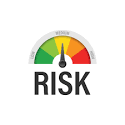 | Risk Analysis Discussion Group |
Dealing with Spam Filters
Email providers and the client applications that you use to get your mail may put three or more spam filters between the sender and the recipient. Most of these are invisible to the average user, and they operate differently depending on your provider and client. Some are quite strict about screening out suspicious emails, while others are more forgiving. Many can be customized to change the level of protection.
This list is implemented through the list-serving platform Mailman, and it is hosted by a service that customizes how it works. Messages from the service to you may be quite simple, but they have complex message headers that are not easily seen by the average user. These complexities can make an innocuous email look suspicious to a spam filter, and we know that some Group members have experienced problems, especially in the sign-up process.
If you think you should have received a message from the Group and haven't, the first thing to do is to see if it has been caught by the filter on your own device. Look for it in a folder called Spam or Junk, or even in your Deleted Items folder, if it hasn't been cleared recently. Then try to figure out how to "whitelist" the post as being from a safe sender. If that fails, you will probably need help from your email provider (Gmail, Yahoo/AT&T, AOL, Hotmail/Outlook, Comcast, or whatever) to do the whitelisting. Tell them to whitelist email from radg@lists.radg.us or even the whole lists.radg.us domain.
Whitelisting
Instructions from a few of the most popular providers are shown below. If you find something good that we haven't, tell us and we may add it here.